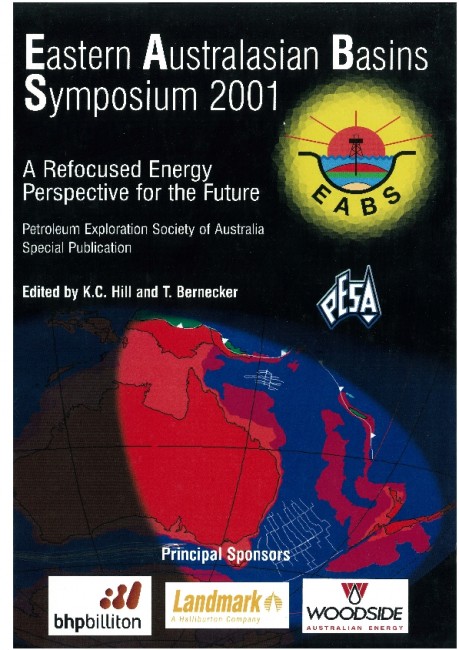Publication Name: Eastern Australian Basins Symposium 2001
Authors: G.J. O'Halloran and E.M. Johnstone
Date Published: November 2001
Number of Pages: 32
Reference Type: Magazine Article
Abstract:
While both ancient and modern subaerial basaltic successions have been well studied in the field, the detailed three dimensional subsurface architecture of a basaltic volcanic rift terrain has rarely been directly imaged. Recent 3D seismic data have provided a unique opportunity to investigate geometries associated with Late Cretaceous basaltic rift volcanism in the northern Gippsland Basin.Tasman (90-80 Ma) seafloor spreading along the east coast of Australia resulted in a phase of intrusive and extrusive activity in the Gippsland Basin, together with fault controlled syn-rift sedimentation (Golden Beach and Emperor subgroups). This was followed by coastal plain and marginal marine deposition during the (essentially) sag-phase Latrobe Group. The Late Cretaceous volcanics of the Golden Beach subgroup do not outcrop onshore, and have been only sporadically intersected in some of the deeper Gippsland Basin wells. Consequently, the distribution, extent and character of these volcanics are relatively poorly understood. The G99a Kipper 3D seismic survey has, for the first time, provided detailed images of the three dimensional architecture of these Late Cretaceous volcanics. Both intrusive and extrusive volcanics have been identified. Amplitude and timeslice mapping have provided images of the subsurface which reveal detailed three dimensional geometries of a asaltic volcanic terrain.
Remnant circular features have been identified within the volcanic pile and are interpreted as the weathered remnants of scoria cones. Interbedded with the higher impedance welded lavas and spatter deposits,
are lower impedance tuffs, shales (?lacustrine), and weathered horizons. Irregular cone-shaped intrusions can be seen to feed overlying basaltic flows. The morphology of these cone shaped laccoliths and their spatial
relationships to active fault systems can clearly be seen with the aid of 3D visualisation tools. A palaeogeographic model has been developed in which fissure fed eruptions and localised scoria cones fed basaltic lava flows upon a Late Cretaceous floodplain landscape.


